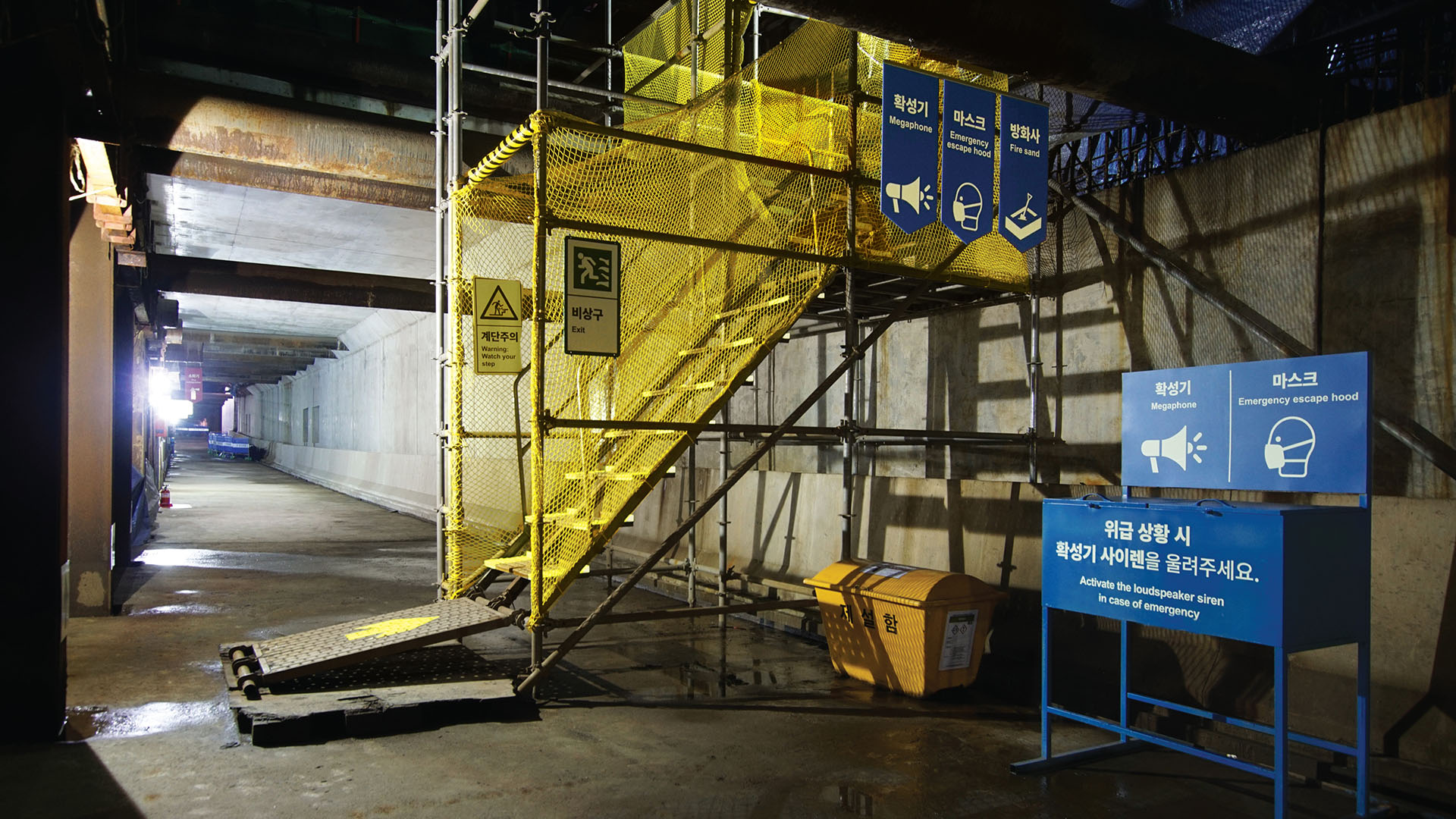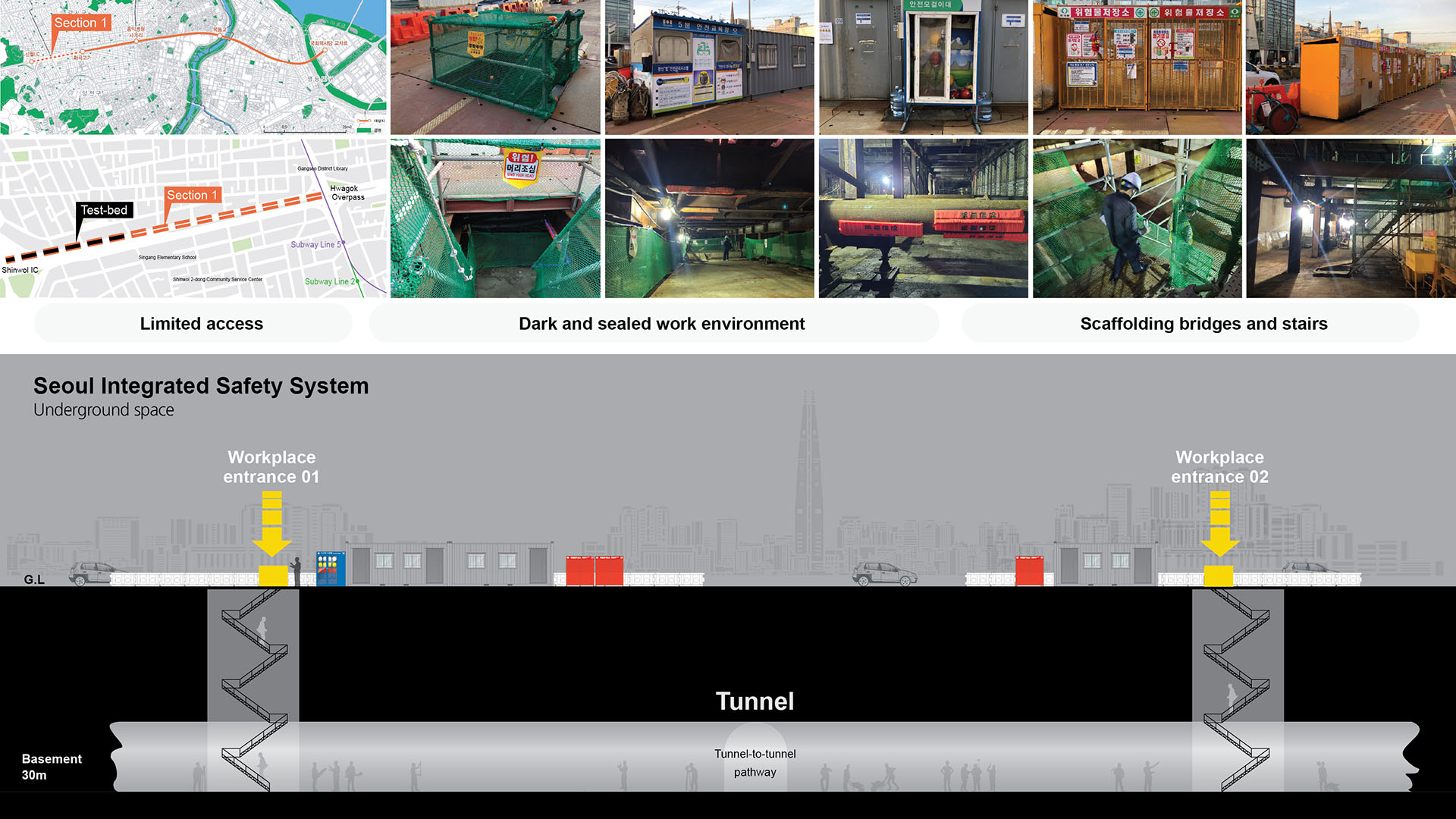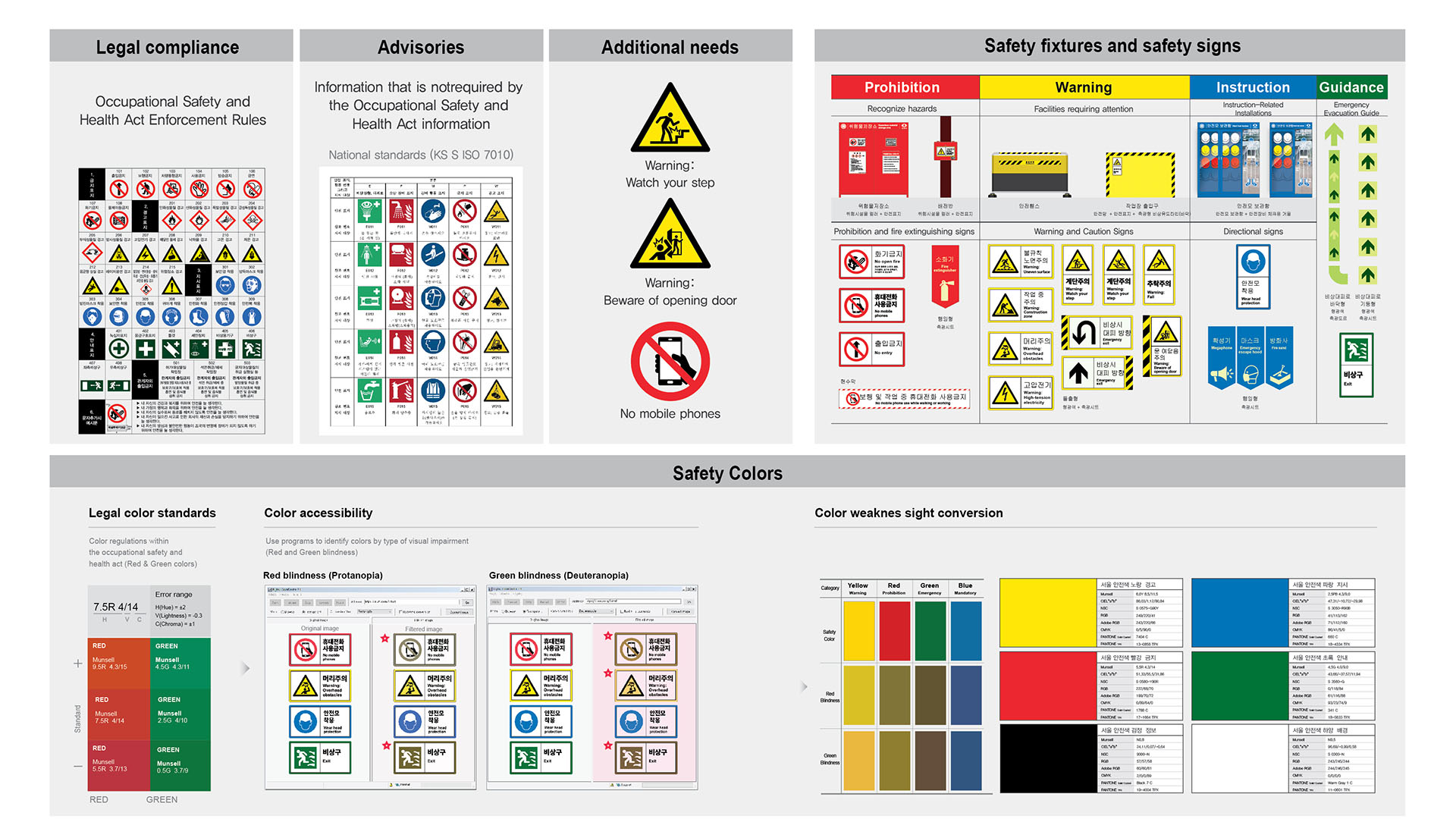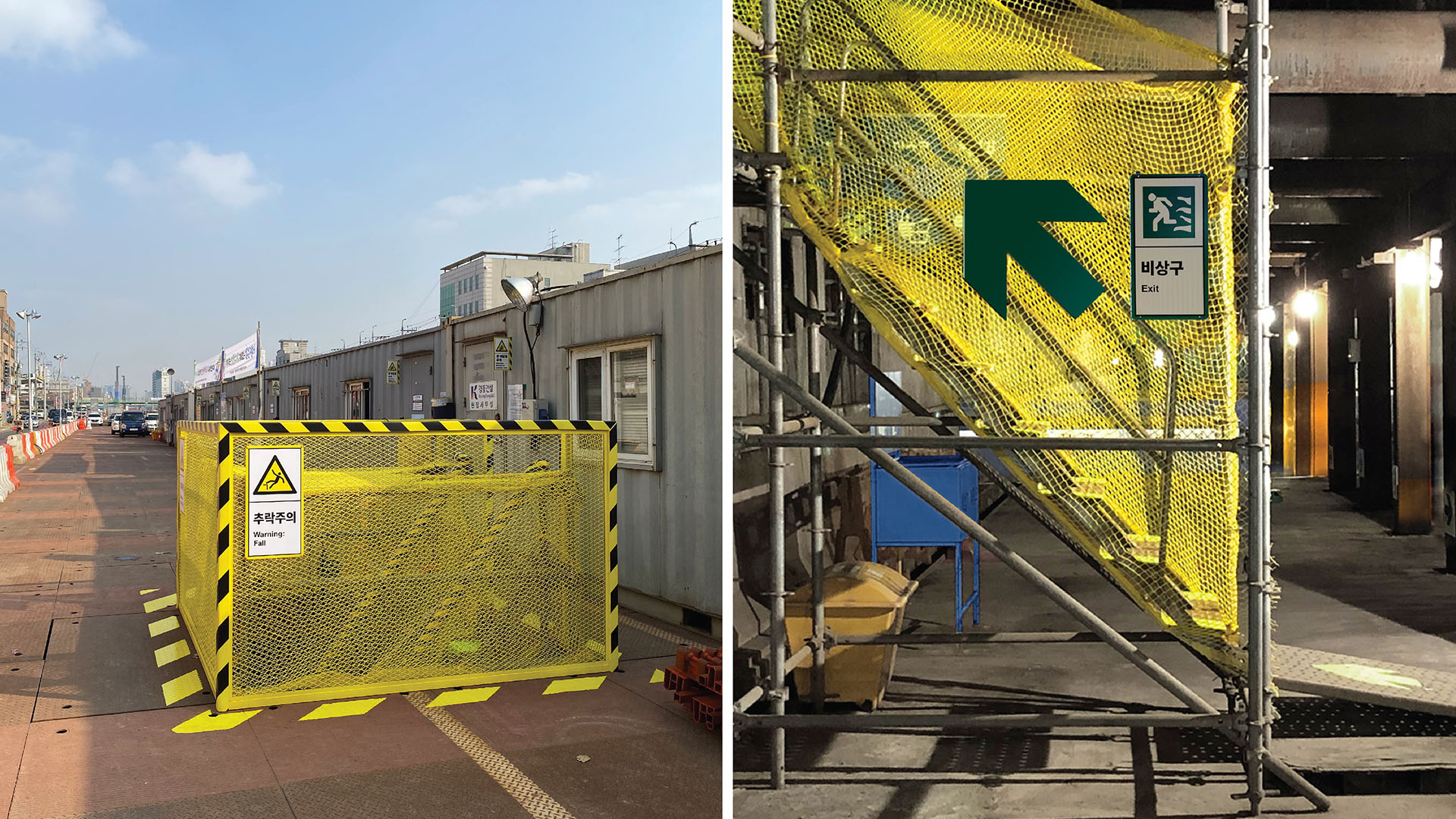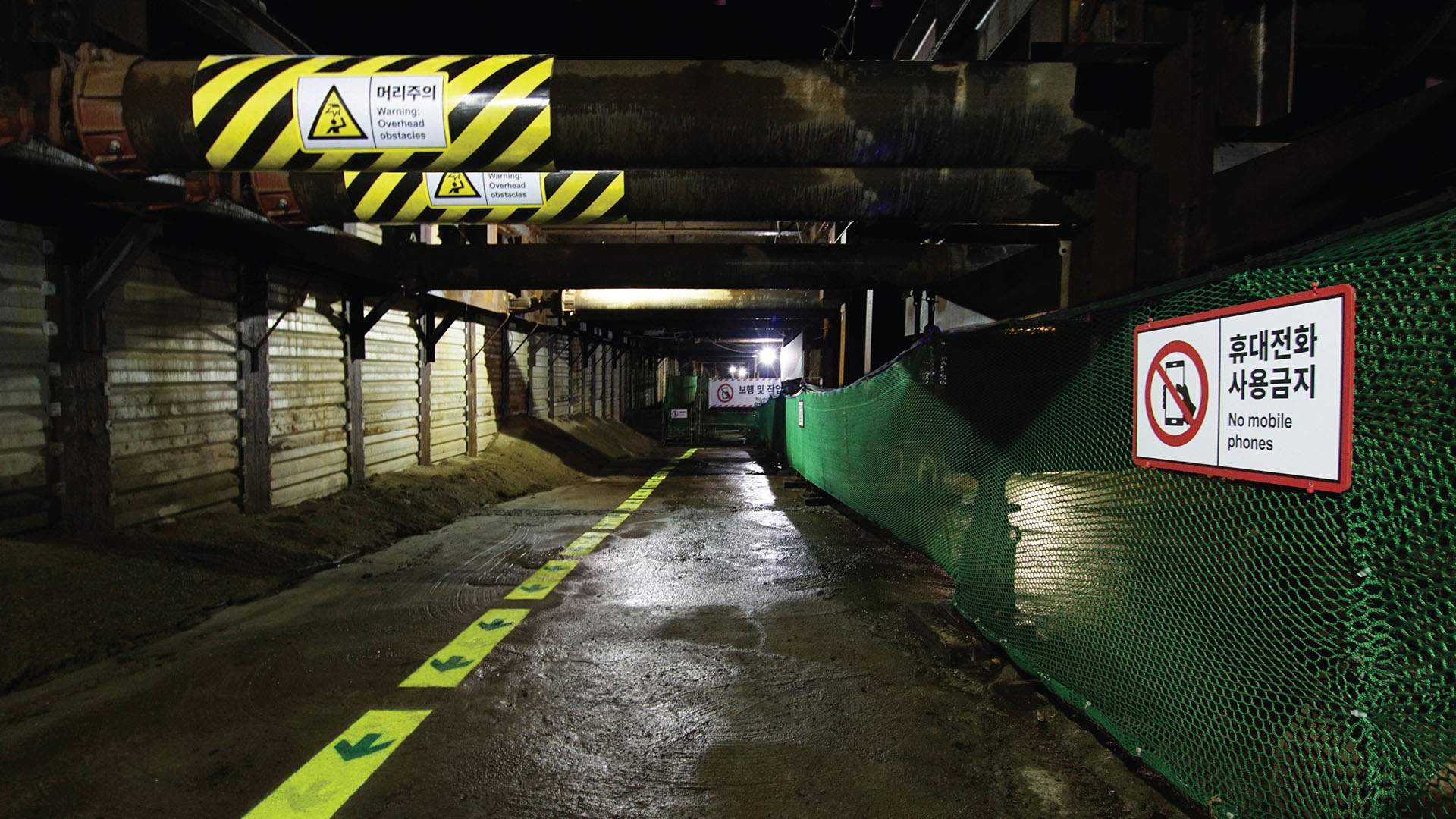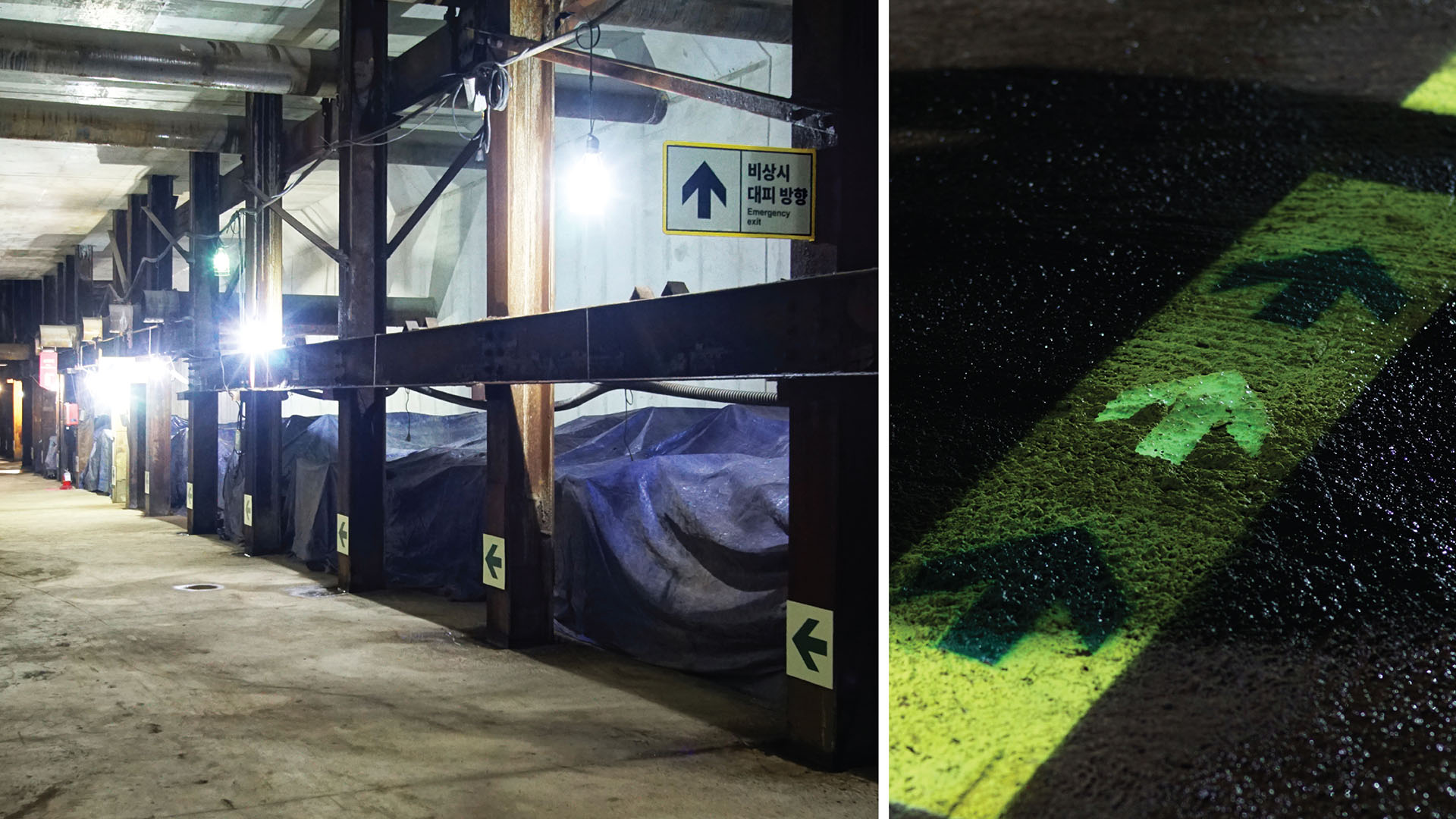Standard Safety Design to Prevent Occupational Disasters
With hundreds of public infrastructure improvement projects underway throughout Seoul at any given time, the Seoul Metropolitan Government was eager to develop a strategy to implement better safety standards in construction sites to not only enhance safety on job-sites, but also to save lives. The project was to develop a total Standard Safety Design solution to be developed, tested, and fully incorporated into an active job site. This unique approach would enable the teams involved to have an unparalleled ability to learn from all levels of professionals in the construction industry, get real-time feedback on ideas and prototypes, come face-to-face with unexpected problems, and be able to use every interaction and experience to create customized solutions.
Agency
Practice Area
Client
Seoul Metropolitan Government
Industry
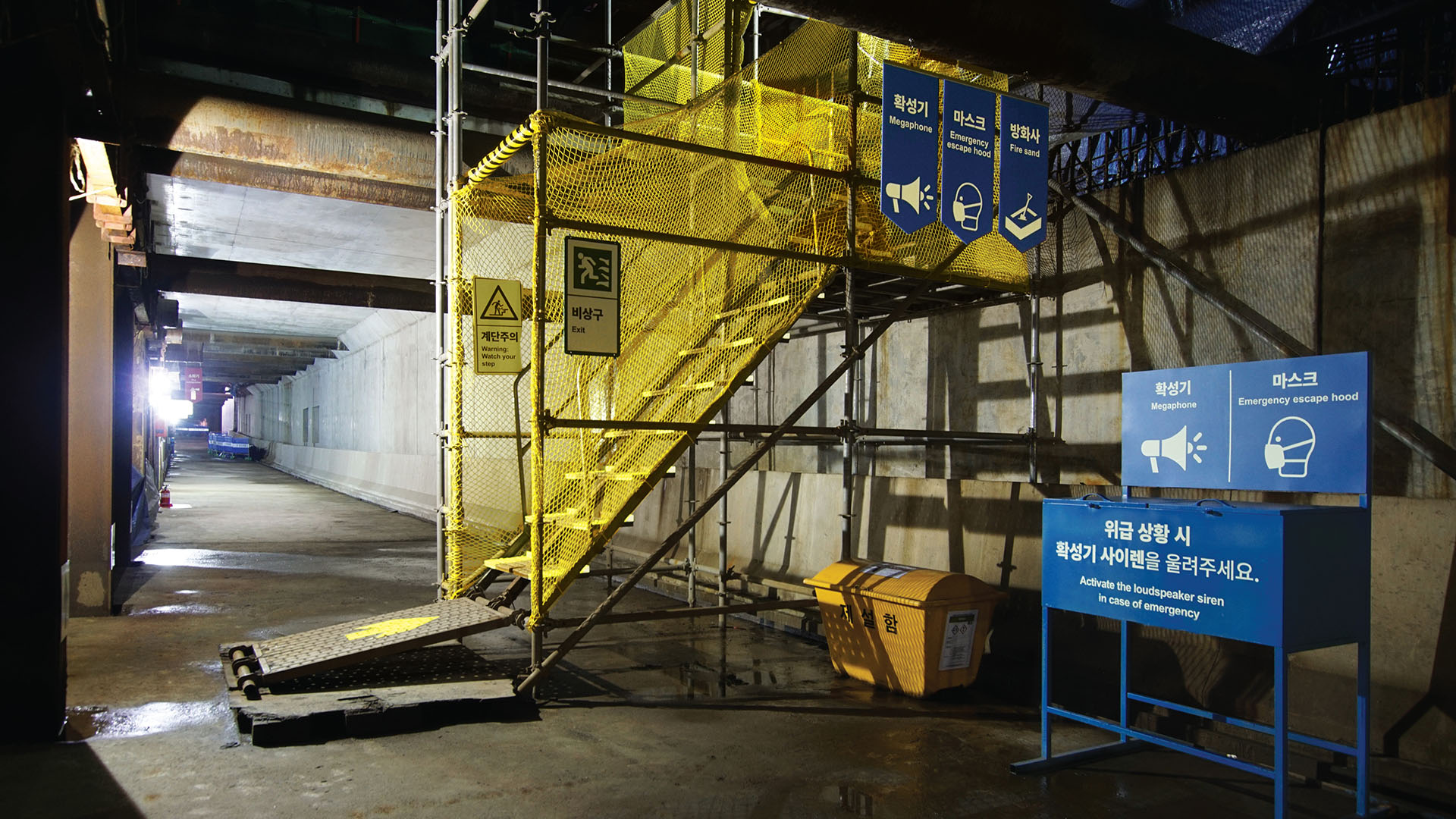
The Challenge
There are many different types of construction sites in Seoul. The ones we see the most are above ground, but the most dangerous ones are under our feet. The selected job-site for this project was a long stretch of urban highway that is being moved underground in order to create an urban haven of parks and public spaces in the midst of a dense concrete jungle in western Seoul. Being an active construction site located quite literally in the middle of a very busy urban highway came with many unique challenges and risks. Further, our solution would have to be presented to, and used by, people from various backgrounds and nationalities.
Project Vision
Our goal was to develop a strategy to present safety-related information, through design, to make safety in the workplace accessible regardless of language and intuitive to use under stress during an emergency situation. We firmly believe that safety, and access to information about safety, should always be barrier-free. Additionally, we set specific goals for preemptive prevention-oriented risk management through the application and distribution of these guidelines. We believe that the work environment can be presented in such a way that safety is built into the job-site through creative design solutions.
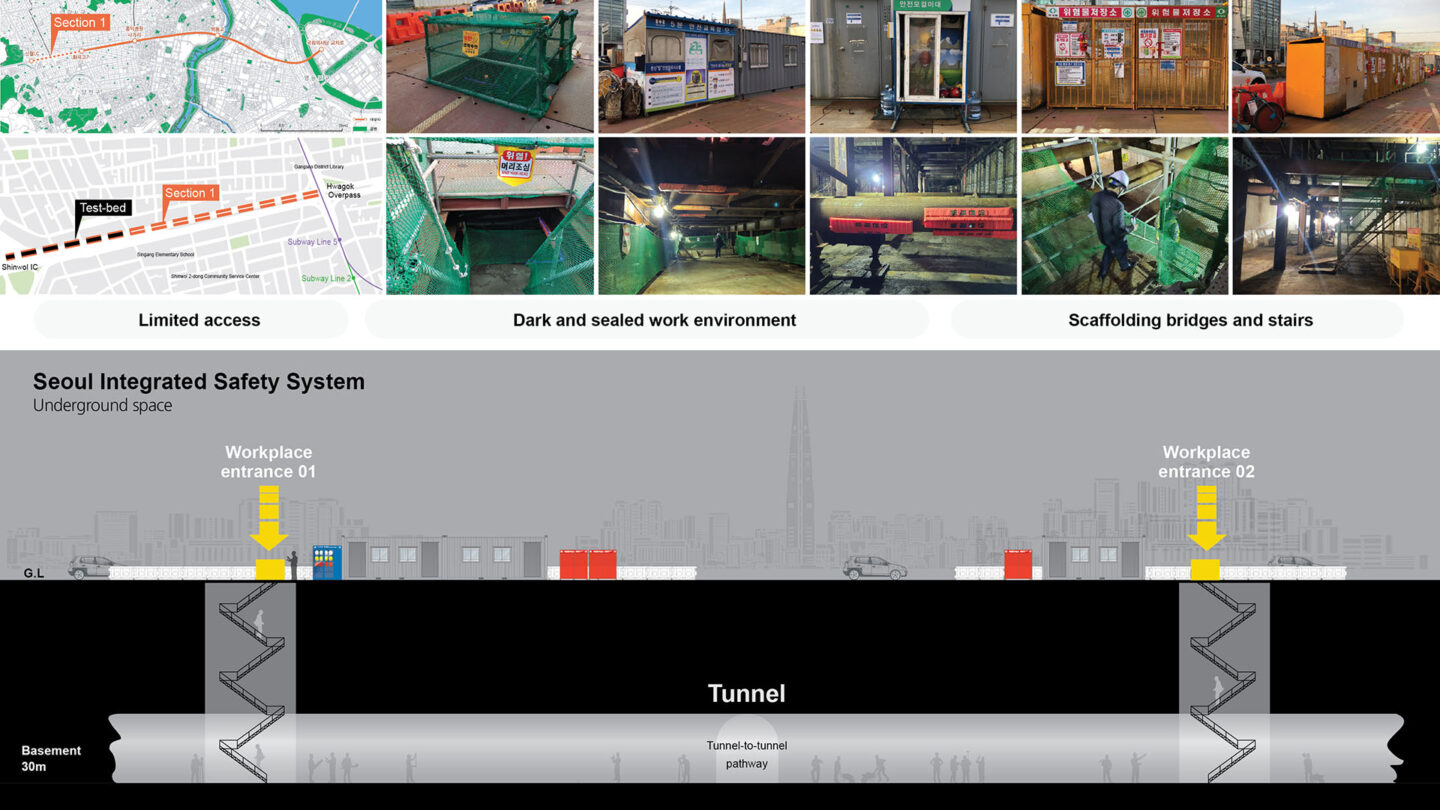
Limited entrances, low-light conditions, sealed environments, scaffolding bridges and stairs, all contribute to higher risk in underground construction sites.
Sherwood Choe, YiEUM Partners Inc.
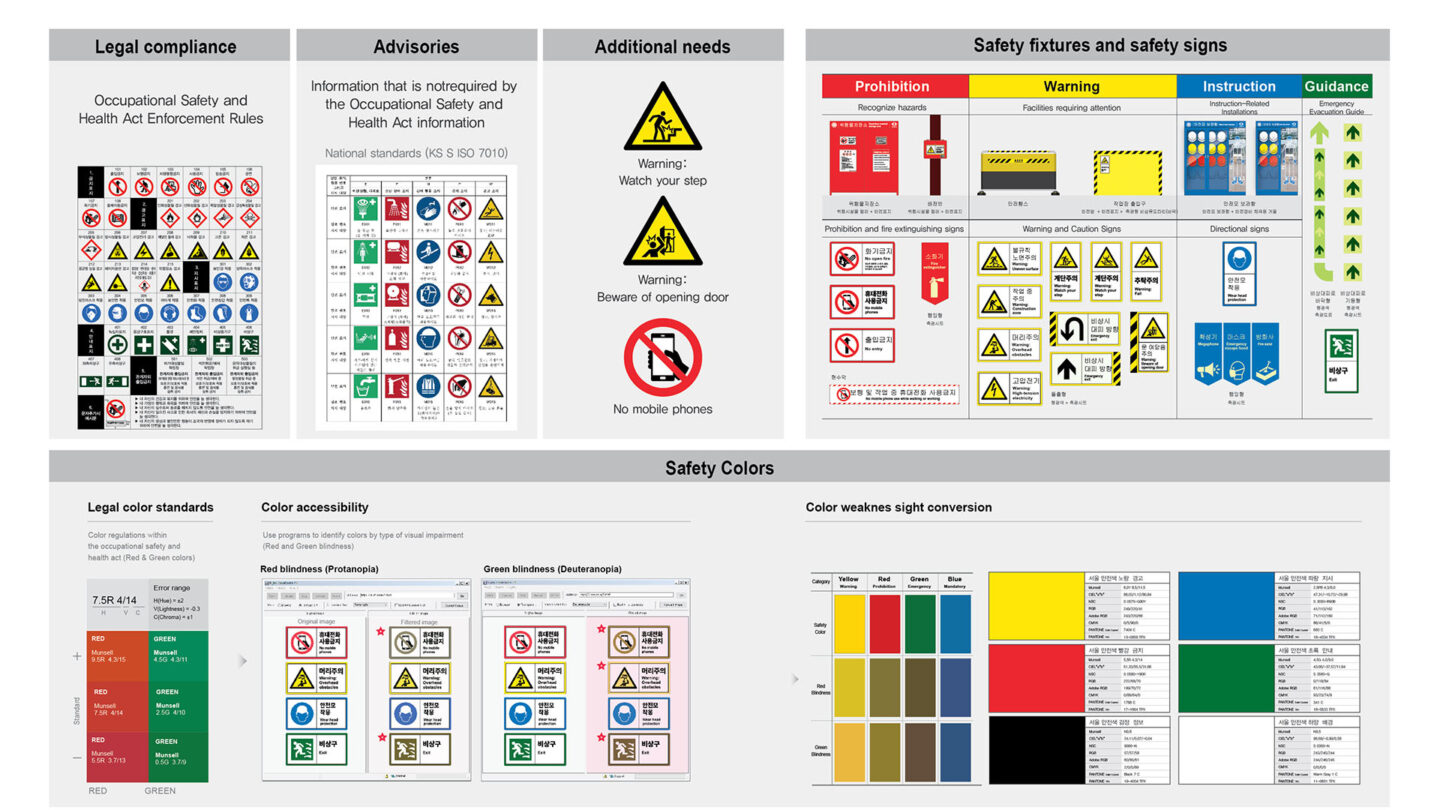
Standardization of safety design, safety facilities, guidance signage, and safety colors was established to also include ease of recognition by those who are color-blind.
Sherwood Choe, YiEUM Partners Inc.
Design + Execution
We conducted an in-depth analysis of risk factors and safety concerns through a lengthy and in-depth series of interviews and workshops with the workers on site, safety managers, experts in various fields and even the residents in the vicinity of the construction zone. Through this process, we were able to gather an incredible amount of information and perspectives to guide our design and solutions.
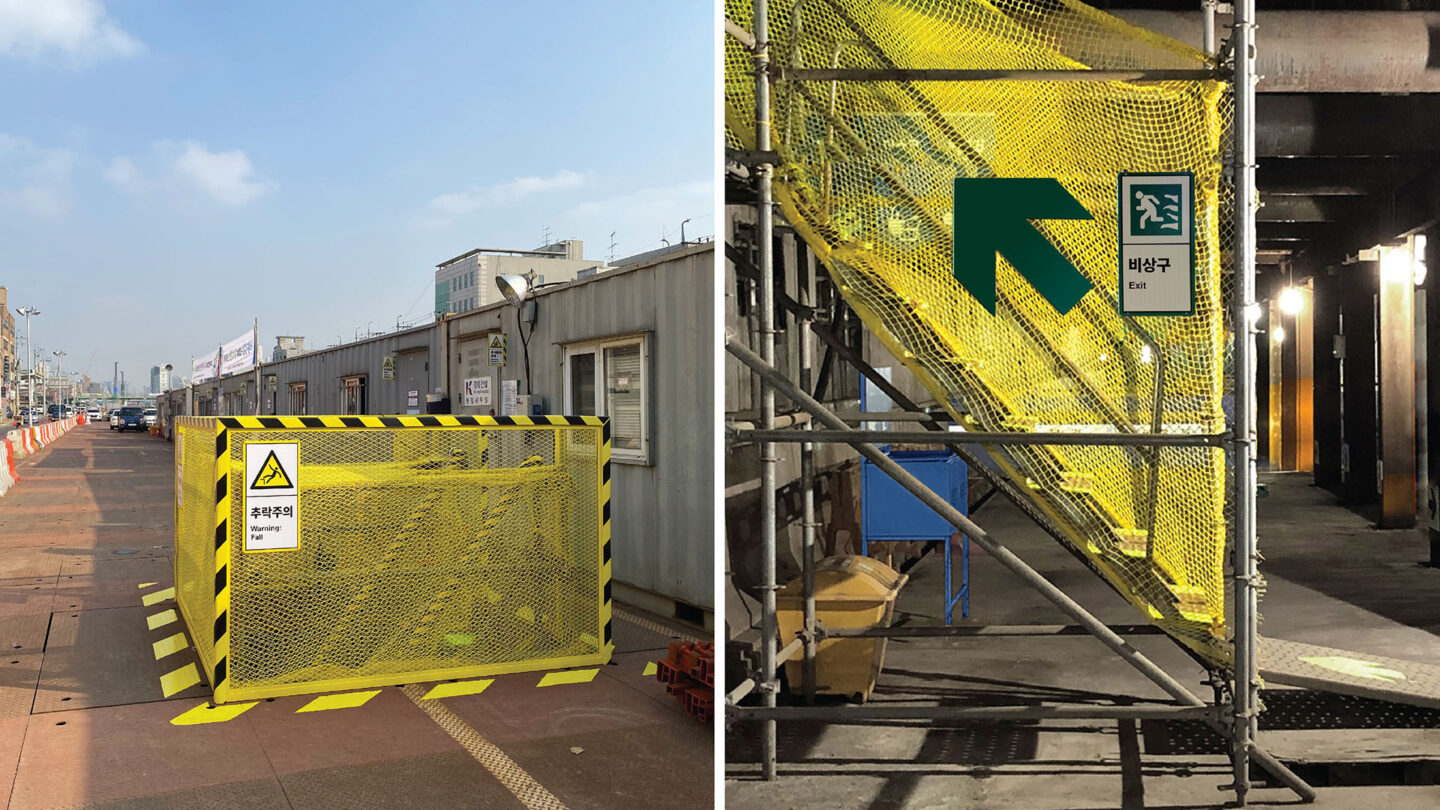
Inducing caution and intuitive awareness of dangerous access points by changing the standard color from Green -> Yellow to draw attention to tunnel entrances/exits and vertical lines of movement.
Sherwood Choe, YiEUM Partners Inc.
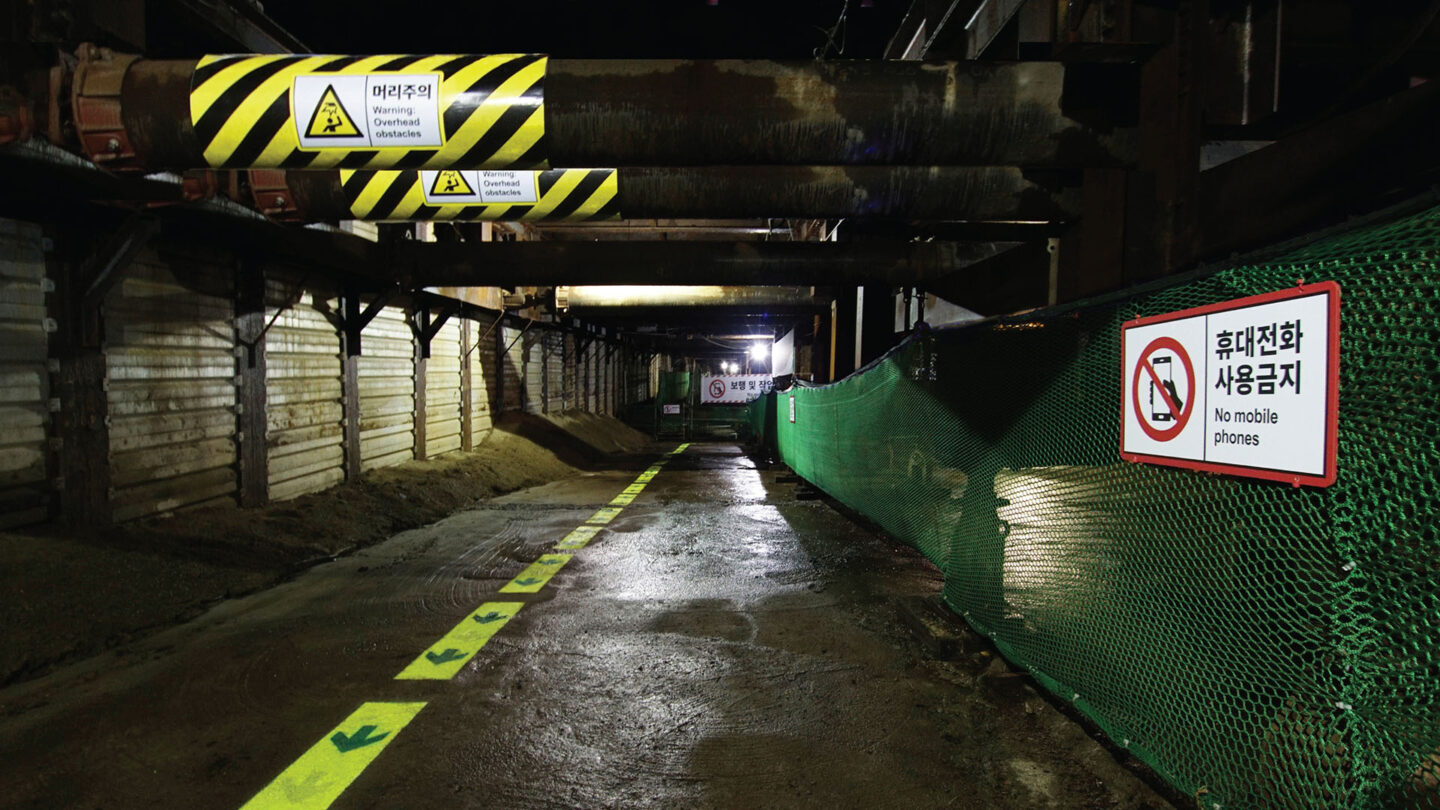
Guidance signs and floor guidance signs with photo luminous paint to prevent collision with low-clearance pipe and reinforcement bars.
Sherwood Choe, YiEUM Partners Inc.

Photo luminous paint and reflective materials are applied to evacuation routes for safe evacuation in low-light and no-light situations.
Sherwood Choe, YiEUM Partners Inc.
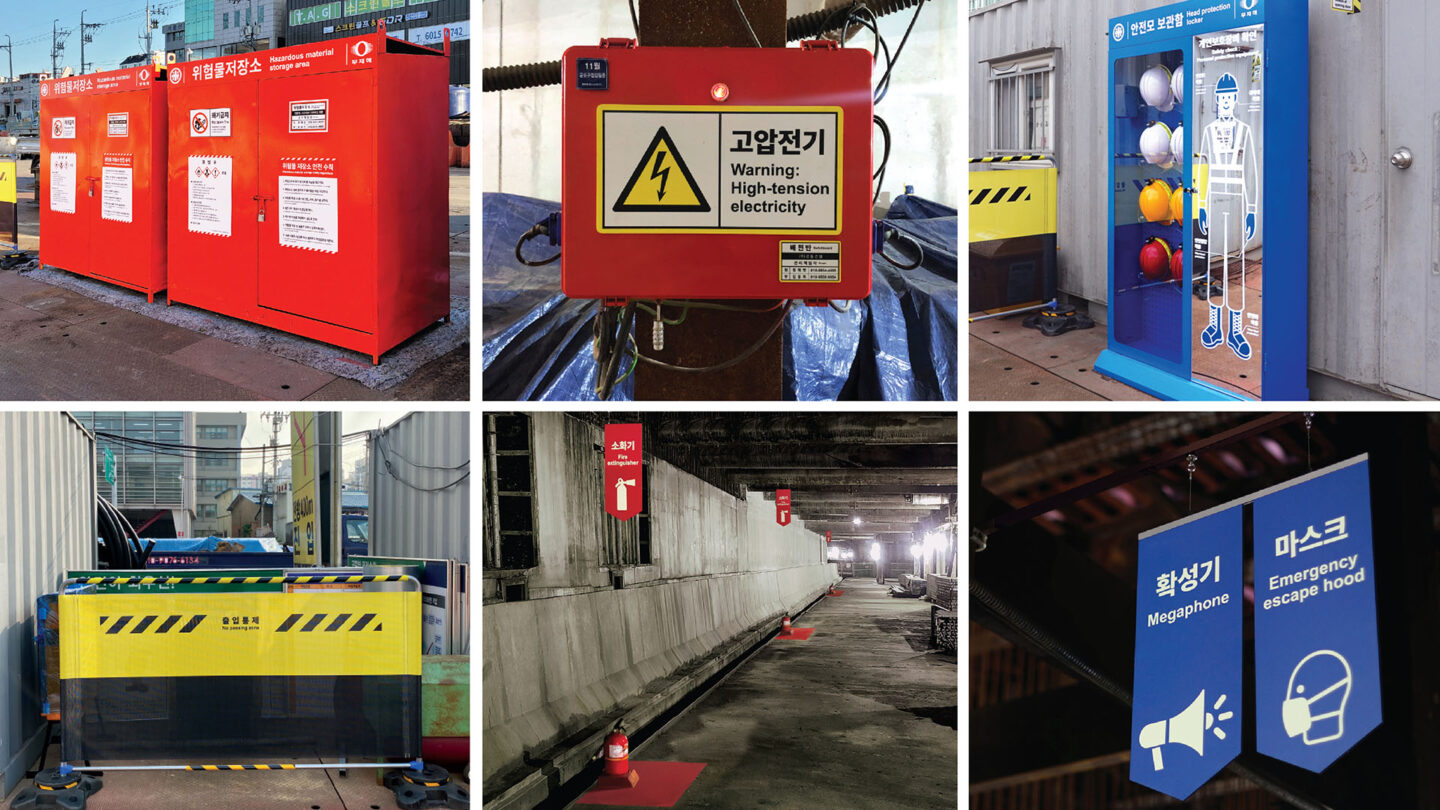
Improving facility recognition through color application for hazardous materials storage, PPE, safety fences, switchboards, fire extinguishers and emergency evacuation facilities.
Sherwood Choe, YiEUM Partners Inc.
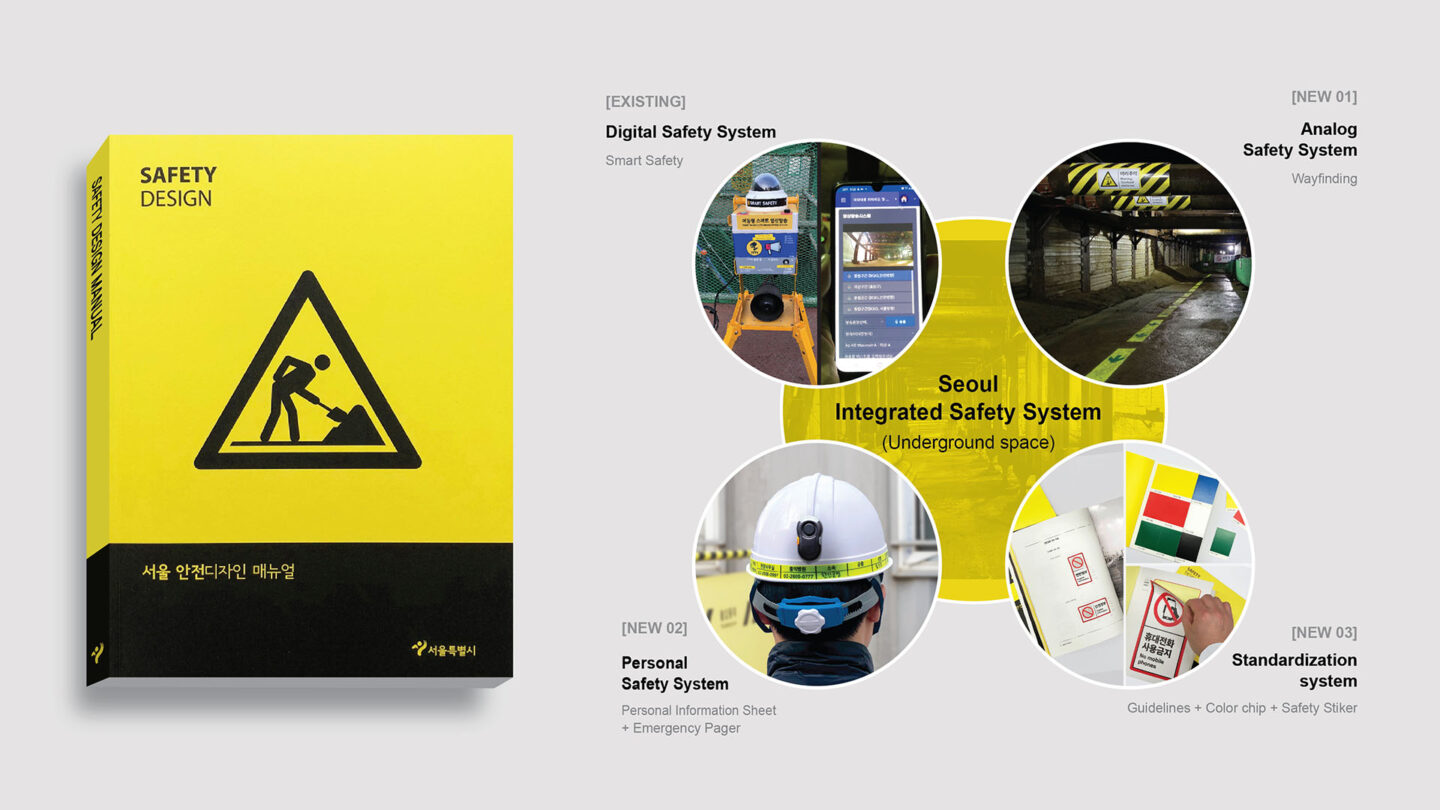
A ‘Smart Safety System’ was developed to integrate analog and digital personal safety systems for individual workers, which included personal information to help identify workers in emergency rescue situations.
Sherwood Choe, YiEUM Partners Inc.
Project Details
Workplace safety is routinely treated as an issue of enforcement, while this applicant took the approach of design to solve an issue that can literally be life or death. As the world continues to dissolve its borders and labor is provided from all backgrounds and languages and clearly defined logic to protect people is more necessary than ever.
The project title speaks directly to the importance of this effort: using design to help save lives. It’s striking and inspiring to see such extensive research, care and attention given to an area — construction sites — that are typically little served by design thinking. The combination of materials, icons and logical use of color creates an appealing visual language that really works.
This project immediately caught our attention, requiring little explanation—a testament to its effective design. The research conducted was thorough, and the recognition of the necessity to develop an approach accommodating communication across diverse cultures and languages was commendable.
Design Team
YiEUM Partners:
Jangwon Ahn (principal in charge)
Seongyul Park (creative director, project manager)
Daeho Kim (technical director)
Heerim Jung (planner)
Hajeong Choi (designer)
Seoul Metropolitan Government:
Inkyu Choi (creative director)
Suim Noh (project director)
Eunsun Kwon (project director)
Youngmin Lee (project manager)
Collaborators
HANSHIN Engineering (architecture)
YiEUM Partners Inc. (planning)
Seoul Metropolitan Government (planning)
Design ENY (physical fabrication)
Photo Credits
Sherwood Choe, YiEUM Partners Inc.
Open Date
November 2022
